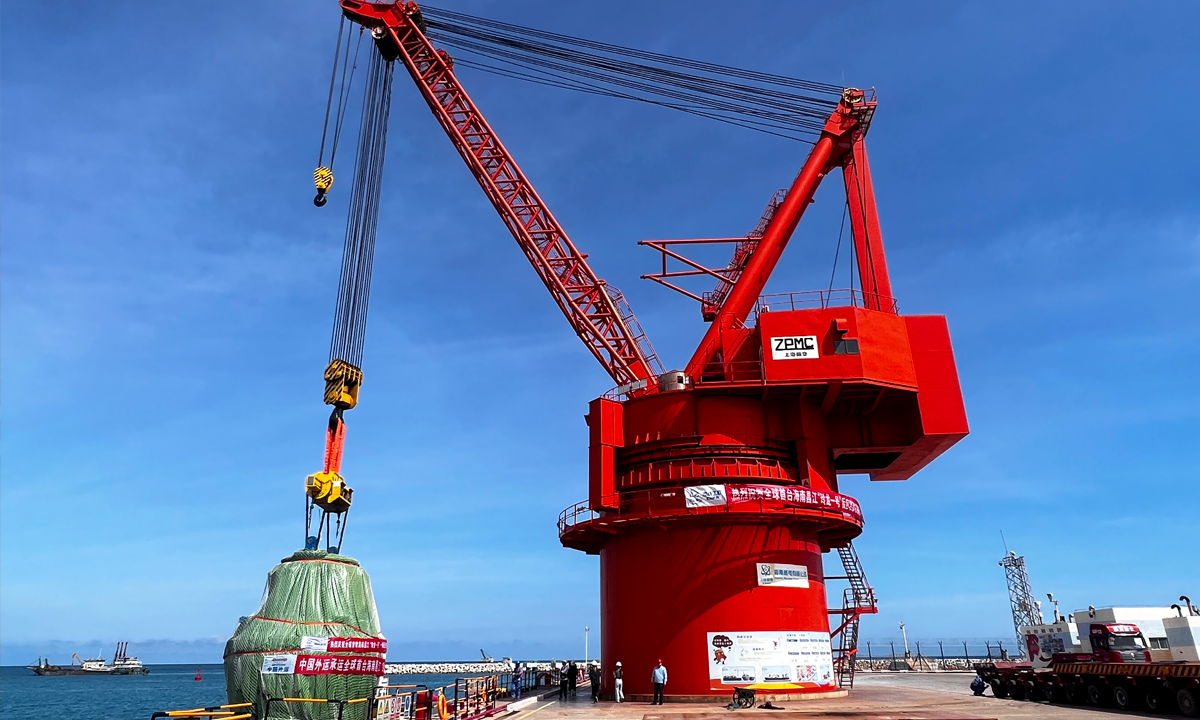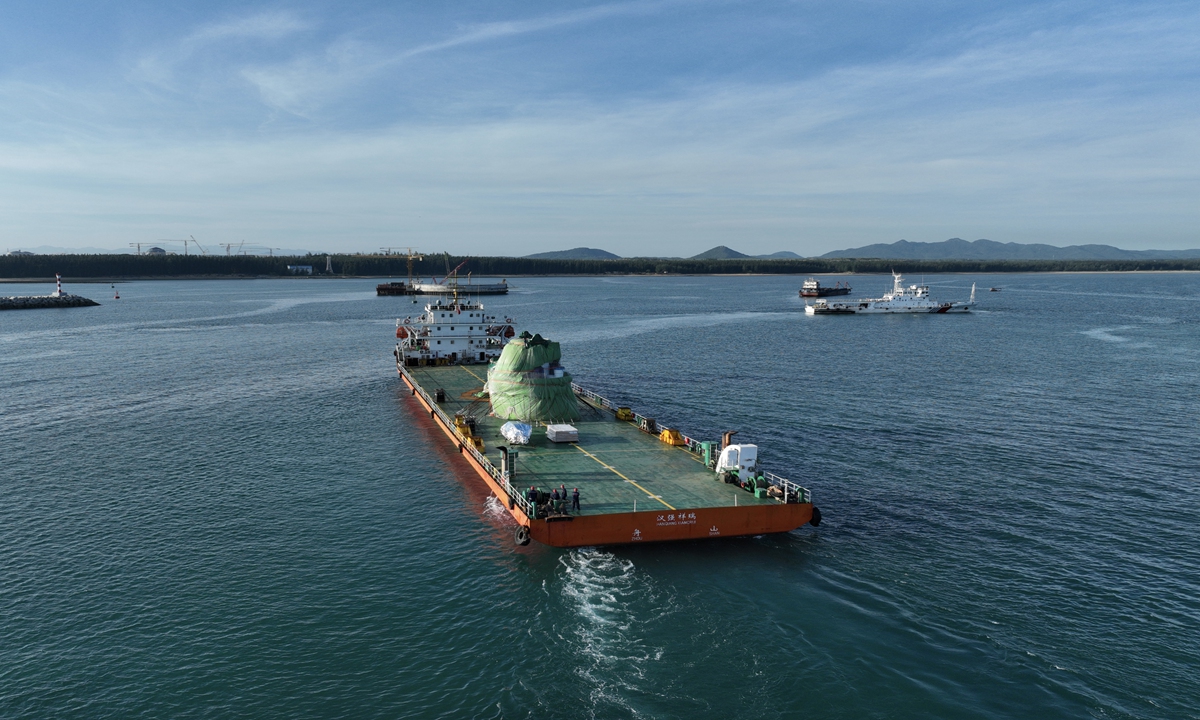
The multi-purpose small modular reactor Linglong One reactor is being unloaded to the dock of the Changjiang Nuclear Power Plant in South China's Hainan Province on July 27, 2023. Photo: Tao Mingyang/GT
The Linglong One, a multi-functional small modular and pressurized-water nuclear reactor (SMR), will be ready for operation in South China's Hainan Province by the end of 2025, almost five months ahead of schedule, according to its builder, as China expands its nuclear power generation capacity on the path to green development.
"After the core module is placed in the container of the Linglong One nuclear plant in early August, relevant assembly work of other equipment will start, and the nuclear reactor may enter operation by 2025. It will provide more clean energy for enterprises participating in the construction of the Hainan Free Trade Port," Chen Jianxin, chief engineer of the Hainan Nuclear Power Co, the operator of the Changjiang Nuclear Power Plant, told the Global Times.
The designed construction period was originally 58 months, but now it stands at 53 months as some of the work was completed in advance, Chen said.
Chen made the remark as the core module of the Linglong One integrated reactor arrived by sea at a special wharf in Hainan on Thursday.
The Linglong One is being built by the China National Nuclear Corp (CNNC) based on independent research and intellectual property rights.
The arrival of the key component marked an important milestone in the construction of the multi-purpose SMR, and of the science and technology demonstration project in Changjiang, according to CNNC.
It represents a breakthrough in the technological innovation of China's SMRs as well as the localization of key nuclear power technology and equipment, the company said.
The installation of the Linglong One started in November 2022. The plant has a generation capacity of 1 billion kilowatts hours annually, enough to meet the needs of 526,000 households.
The SMR is much cheaper and smaller than the Hualong One, which has been exported, and it could meet the need for desalination and electricity generation, Chen said.
Each Hualong One reactor costs 20 billion yuan ($2.8 billion) to build whereas the Linglong One costs just 5 billion yuan, and it has great potential for export sales, Chen said.
The core module passed its acceptance test on July 13, a historical step in the modular production of small pressurized water reactors. It is also the world's first commercial onshore SMR, CNNC told the Global Times.

The core module of the Linglong One is being shipped to the Changjiang Nuclear Power Plant in South China's Hainan Province on July 26, 2023. Photo: Courtesy of Hainan Nuclear Power Co
The core module of the Linglong One reactor has two main components: the pressure vessel and the steam generator. They were independently designed by CNNC's Nuclear Power Institute of China and manufactured by China First Heavy Industries.
"Compared with the large reactor, the SMR can be seen as a laptop that integrates a monitor, mainframe and keyboard with a relatively smaller size," said Song Danrong, designer-in-chief of the Linglong One.
The Linglong One is an example of China's rising investment in energy projects, as it strives to ensure energy supplies while pursuing a transition toward low-carbon and green energy sources.
There are two 650 megawatt (mW) nuclear reactors in operation and two 1,200 mW Hualong One nuclear reactors, as well as the Linglong One, at 125 mW, under construction.
The five reactors would generate more than 10 billion kilowatt hours of electricity a year, equivalent to one-third of the province's power demand, according to Chen.
China is expected to operate the world's largest nuclear power plant fleet by 2030, and nuclear power is set to account for 10 percent of all electricity generation by 2035, according to a separate industry report in April.
Lin Boqiang, director of the China Center for Energy Economics Research at Xiamen University, said that the Linglong One could act as a demonstration project.
"If China could use the pilot project for a while and demonstrate its safety, the opportunities for exports could rise, especially if global carbon prices rise," Lin said.
The small reactor faces the issue of economic feasibility as well as a difficult path to commercialization, Lin said. But its versatility means that it is being researched around the world.
China's nuclear exports have maintained their momentum. On July 14, the groundbreaking ceremony for Unit 5 of the Chashma Nuclear Power Plant in Pakistan was held.
The unit is the third million-kilowatt-class unit of the Hualong One, China's domestically developed third-generation nuclear power generator, which was exported to Pakistan.





